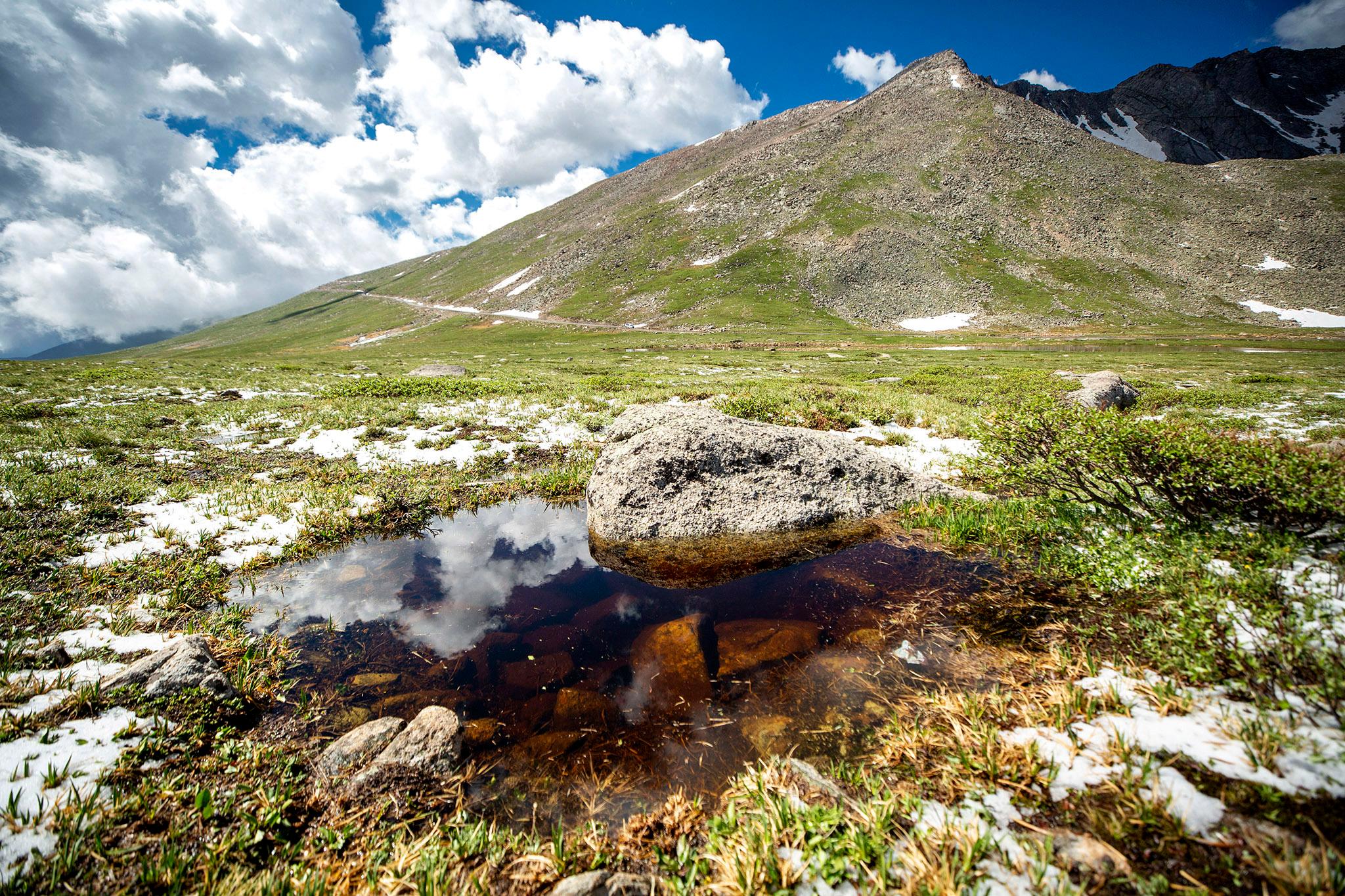
A federal panel is set to consider a new name for Mount Evans as soon as next week.
The renaming is now set for consideration at the March 9 meeting of the U.S. Board on Geographic Names. A similar state board has already unanimously recommended the name “Mount Blue Sky.” However, the federal agenda says they will consider all the names presented to the Colorado board.
U.S. Sens. Michael Bennet and John Hickenlooper of Colorado both endorsed the Mount Blue Sky name in a Friday press release, and said Gov. Jared Polis has endorsed it as well.
"The renaming of Mt. Evans to Mount Blue Sky is an important step in addressing the wrongs done to the Cheyenne and Arapaho Tribes and Native people across the country,” Bennet said in the release. “This was a thoughtful process, led by local Colorado communities and tribes, and I’m grateful to everyone who contributed to this moment.”
The 14er, which looms above Denver, is currently named for Colorado territorial Gov. John Evans, who created the conditions that led to the 1864 Sand Creek Massacre of Cheyenne and Arapaho people on the plains southeast of Colorado Springs. Evans ordered friendly indigenous tribes to go to the area near Fort Lyon. That conflicted with a standing U.S. military order to shoot and kill indigenous people who approached U.S. forts.
On Nov. 29 that year, and in defiance of peace negotiations that were underway, Col. John Chivington led troops from Fort Lyon who shot and killed as many as 230 Cheyenne and Arapaho, many of them women and children.
During the almost 159 years since the massacre, Evans’ role has come under increasing scrutiny. Evans founded both Northwestern University and the University of Denver. In 2014, both universities produced reports on Evans involvement in Sand Creek. Northwestern scholars determined that while Evans did not order the massacre, and had no advance knowledge of it, he “nonetheless was one of several individuals who, in serving a flawed and poorly implemented federal Indian policy, helped create a situation that made the Sand Creek Massacre possible.”
The University of Denver report reached a similar conclusion.
“John Evans’s pattern of neglect of his treaty-negotiating duties, his leadership failures, and his reckless decision-making in 1864 combine to clearly demonstrate a significant level of culpability for the Sand Creek Massacre,” the report said.
The other names considered in Colorado were Mount Cheyenne-Arapaho, Mount Rosalie, Mount Sisty, Mount Soule and a continuation of Mount Evans, in honor of Evans’ daughter, who played no role in tribal affairs.
But it was Mount Blue Sky that attracted unanimous support from Colorado’s 14-member geographic naming advisory board and from the tribes that sent representatives to the meeting.
“I think the best name is Mount Blue Sky because it means so much as a ceremony to the Cheyennes,” Southern Arapaho tribal representative Fred Mosqueda told the panel. “It’s the same name that some people still call my tribe.”
Blue Sky is also the name of an annual dance and ceremony celebrated by the Cheyenne, giving the name significance to both tribes attacked at Sand Creek.
“The names we give Colorado’s greatest landmarks should honor the entirety of our history,” Hickenlooper said. “Mount Blue Sky acknowledges the Native peoples who first called Colorado home. The act of renaming the mountain altogether helps directly face a very dark part of our history.”
The federal panel is also set to change the names of Negro Mesa and Negro Creek in Delta County to Clay Mesa and Clay Creek.









